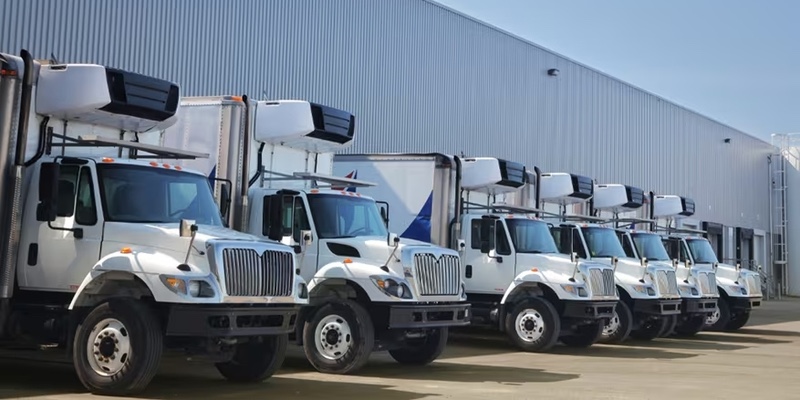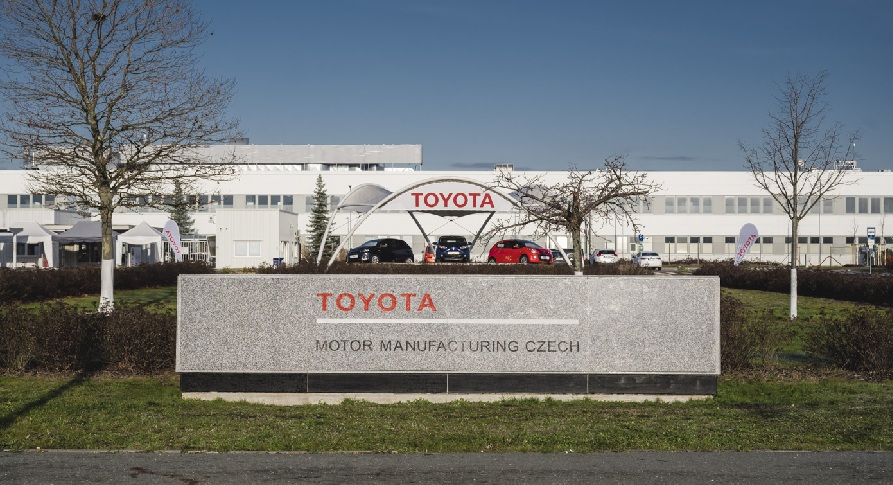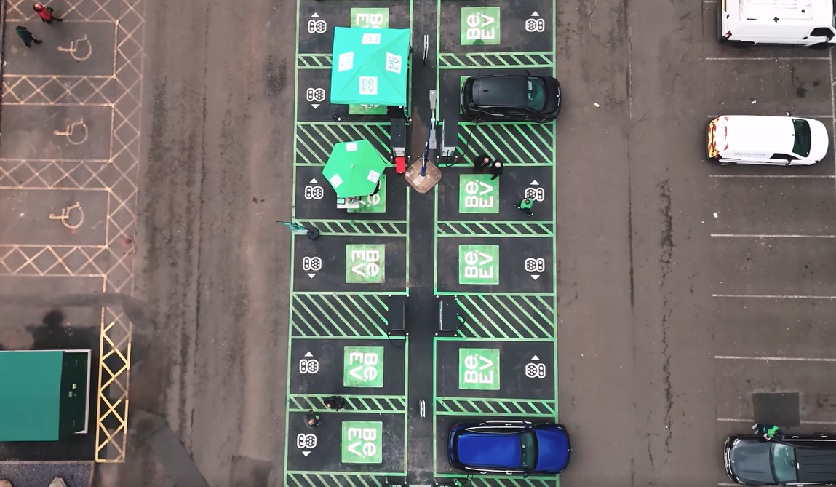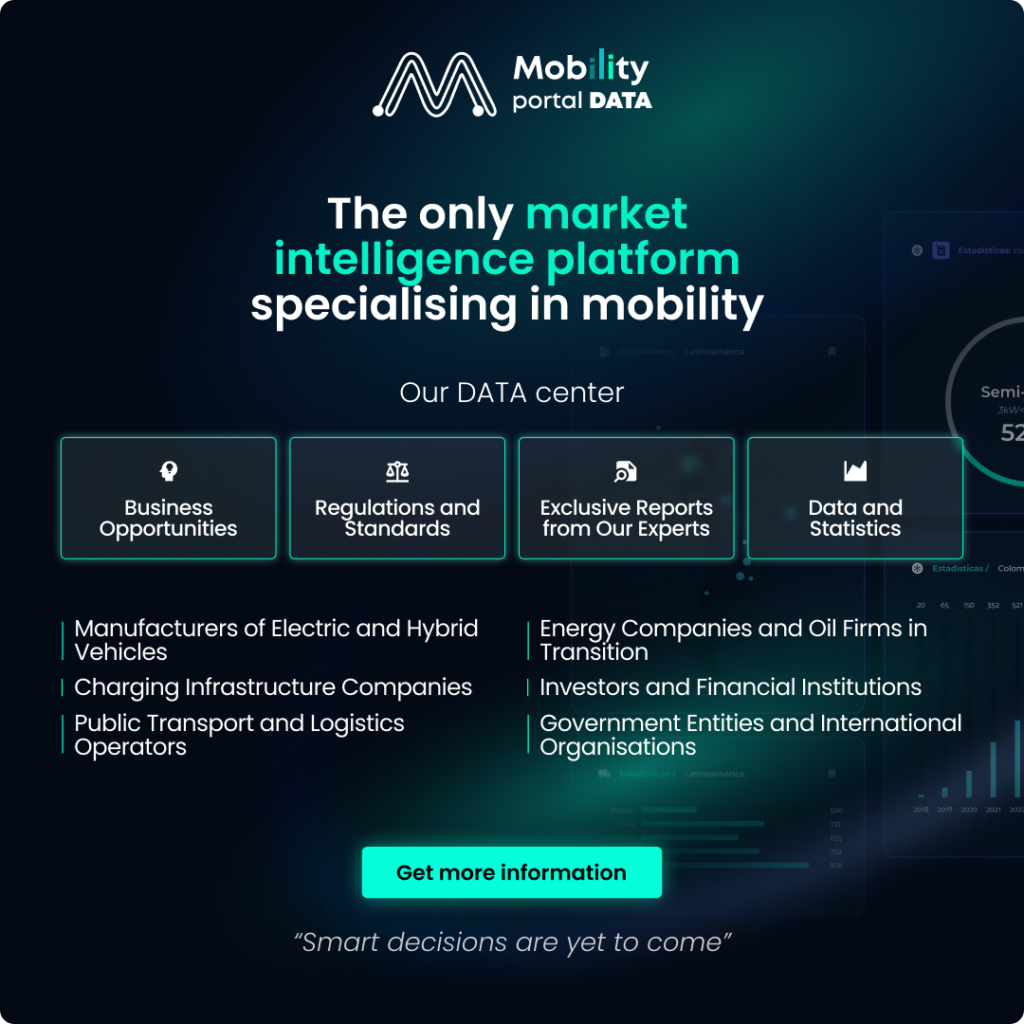The electrification of the logistics sector is no longer a question of whether it will happen, but of how and when it will be successfully scaled up.
This process entails challenges that businesses must navigate in order to achieve an efficient transition.
Charging infrastructure, route planning, operational costs, and technological integration are just some of the barriers that need to be addressed for heavy electric transport to reach its full potential.
Below, Mobility Portal Europe examines each of these challenges and proposes potential solutions.
Charging Infrastructure
The classic question of whether charging infrastructure or electric vehicles should come first seems to have found an answer in the transport industry.

In this context, Sebastian Wolff, co-founder of FRYTE Mobility, asserts: “The logistics sector reached a consensus that infrastructure must come first.”
This approach is based on the need to ensure strategically located charging points that allow transporters to plan operations without disruptions.
According to Wolff, in theory, it is already possible to drive a fully electric truck across Germany today.
However, he notes: “To have truly seamless operations and more alternatives and competition in the market, there is still much to be done.”
The German government’s Deutschlandnetz plan aims to address this need through public charging stations, though doubts remain about its capacity to meet the growing demand for heavy vehicles.
For this reason, in 2024, the Federal Ministry of Transport and Digitalisation (BMDV) launched a tender to establish a charging network across approximately 130 unmanaged rest areas along motorways.
This will drive the construction of 350 “refuelling” points, with eight-year operation contracts and the possibility of extension.
Modernisation of the Electrical Grid
For this rollout to be feasible, Wolff maintains that investment in the electrical grid is required.
“In Germany, we have a very old system, far from being smart or in any way controlled,” he elaborates.
He emphasises: “We need to invest in a more advanced electrical infrastructure, which will not only be very costly but also have to go through a lengthy approval process.”
According to the expert, some of these processes could take up to ten years to complete.
Route Planning and Operational Management
Beyond the electrical grid, route planning is one of the main challenges for the sector due to the variability in the energy consumption of each vehicle and the availability of charging points.
“Some of our partners are struggling with organising routes: determining where to charge and how to do so,” comments Wolff.
This means companies must adopt advanced software tools that integrate real-time data on truck charge status, station availability, and energy costs.
In this context, the “DRivE” project, developed by RWTH Aachen University and funded by the German Federal Ministry of Transport and Digitalisation, provides a solution to this problem.
By using artificial intelligence and optimisation algorithms, the software calculates optimal routes considering energy consumption, topography, and charger locations.
“Digital solutions can reach market maturity and generate a profound transformation of road freight transport,” asserts Achim Kampker, director of the PEM Chair at RWTH University.
At the same time, the lack of standardisation in communication between vehicles and charging infrastructure presents a problem.
In this context, it is necessary to develop a reservation system for charging spots.
After four and a half hours, truck drivers are legally required to take a break, likely at a public motorway station.
Therefore, they need to be certain that when they arrive, a free space will be available for “refuelling.”
Operational Costs and TCO
Another obstacle to the adoption of electric trucks is their initial cost.
In Germany, the KsNI programme, which ended in December 2023, left many transporters in a state of uncertainty.
As a result, many companies were forced to postpone or cancel their electrification plans.
However, much of the market has found alternatives based on the analysis of Total Cost of Ownership (TCO).
“The focus has shifted more towards TCO calculations and not just the initial price of the vehicles,” explains Bruno Lukas, founder of Green Logistics Enabler (GLE).
In this sense, he argues that directly comparing a diesel truck to an electric one is a mistake, as the operating cost of electric vehicles tends to be lower, particularly when energy prices are optimised.
The integration of charging infrastructure, electricity sources, and kilowatt-hour pricing is necessary to establish fair competitiveness.
“If the fleet operator can charge the vehicles at a price between 20 and 30 cents per kWh, TCO parity can be achieved,” says Lukas.
In the long term, electrification projects could prove more economical in terms of OPEX, and if these savings are optimised, they could be used to refinance the initial investment (CAPEX).
“This means that purchasing a more expensive truck can be justified,” he adds.
He highlights: “That was the lesson the market learned last year: consider the entire electrification ecosystem surrounding the truck.”
Moreover, initiatives such as the new CO2 toll, introduced in December 2023 in Germany, are creating incentives for electrification.
Electric trucks are exempt from this payment until the end of 2025, and from 2026, they will pay only 25% of the fee that diesel vehicles pay, representing a saving for businesses.
Driver Training
Beyond costs, logistics companies must also reconfigure their operations to integrate electric trucks efficiently.
This involves changes in driver training and fleet management systems.
“The truck’s consumption depends heavily on how the driver drives it and how the software is configured,” explains Wolff.
It is worth noting that some logistics companies with over 100 years of experience are facing the challenge of operating with entirely new and distinct equipment.
“They now have to completely transform their operation, similar to the transition from horse-drawn carts to trucks, for example,” he explains.
To do so, they must redefine all their processes and retrain their drivers.
“They are starting from scratch, but they face the pressure of completing this transition in a few years, despite the fact that their company has been operating for centuries,” Wolff underlines.
How is the eTruck landscape in Germany?
Despite these challenges, the logistics sector is making determined progress towards transitioning to electric trucks.
With a 57.4% increase in eTruck registrations in Germany in 2024, the country continues to lead the adoption of this technology in Europe.
Regulations, customer demands, and cost strategies are driving the transformation, although the barriers mentioned remain to be overcome.
For electrification to become a reality, experts agree on the need for stable government policies, competitive energy prices, and improvements in infrastructure.
RAD MORE
-
Italy welcomes ABB’s new 50 kW charger: First C50 units installed at Il Castagno outlet
The installation, completed in early June, is part of ABB E-mobility’s Early Adopter Program (EAP), a global initiative aimed at gathering real-world insights to refine new products in their intended environments.
-
Czech Republic in focus: Toyota to build its first electric vehicles in Europe
Toyota is expected to begin production at its new megacentre in the Czech Republic from 2028. Once fully operational, the facility is projected to produce around 100,000 EVs per year.
-
Be.EV installs 16 ultra-rapid chargers at Gallagher Retail Park
The site offers 150 kilowatts charging facilities within a 50,000 sq ft retail park that features major brands such as Decathlon, Costa and B&M.











